 | ||
Port denison sailing club bowen yellow fleet fun
The Yellow Fleet was the name given to a group of fifteen ships trapped in the Suez Canal (in the Great Bitter Lake section) from 1967 to 1975 as a result of the Six-Day War. Both sides of the canal had been blocked by ships scuttled by the Egyptians. The name Yellow Fleet derived from their yellow appearance as they were increasingly covered in a desert sand swept on board. After eight years, the only ships that were able to leave under their own power were the German ships Münsterland and Nordwind.
Contents
- Port denison sailing club bowen yellow fleet fun
- Yellow fleet optimist training 13 02 2016 port denison sailing club
- History
- References
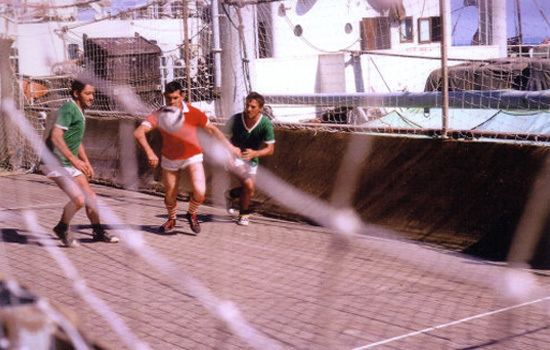
Yellow fleet optimist training 13 02 2016 port denison sailing club
History
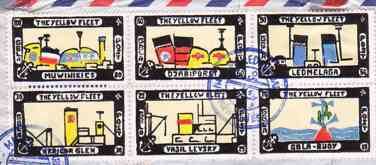
In June 1967 the fifteen ships were sailing northwards through the Suez Canal as a war broke out between Israel and Egypt in what was to become known as the Six-Day War. Both ends of the canal were closed, and after three days it became apparent that the canal would remain blocked for some time as a result of the scuttling of ships to block its passage. Fourteen ships were forced to anchor in the widest part of the Suez Canal, the Great Bitter Lake. Some of the scuttled ships cut off the SS Observer from the other ships and it had to anchor in Lake Timsah.
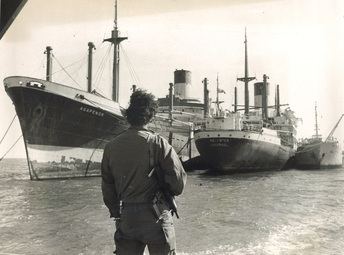
Ships, dredgers, other floating craft and even a bridge were sunk to block the canal. In addition to the vessels that were sunk, there were a number of sea mines that prevented navigation. With the war having left the Israelis in possession of the entire east bank of the canal, the Egyptian President Gamal Abdel Nasser quickly resolved to keep the canal closed to all shipping indefinitely. The only other alternative would have been allow the Israelis to use it, which was anathema to the Egyptian government. Even if the political issues surrounding the canal could have somehow been resolved, its maintenance would have been economically unviable since very few (if any) shippers would have been willing to send their vessels and crews through what was effectively a no man's land in an active combat zone.
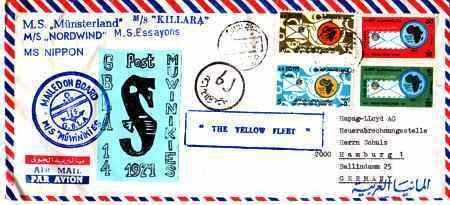
Throughout the eight years, the Israeli and Egyptian armies faced off against each other on either side of the Suez Canal. Sometimes raiding parties from both sides would slip across the canal to carry out intelligence gathering missions. One of the big concerns was that the canal would become silted up without regular dredging. It turned out to be a non-issue as 90% of the silt is a result of currents caused by the turning of ships' propellers, which was virtually non-existent during this period.
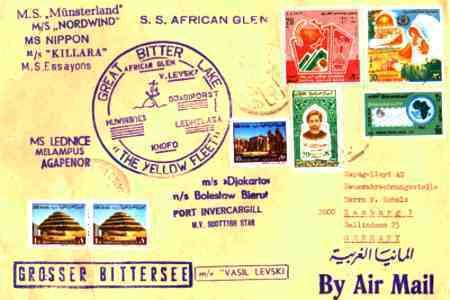
In October 1967, the officers and crews of all fourteen ships met on the Melampus to found the "Great Bitter Lake Association" which provided mutual support. Crew members continued to regularly meet on board their ships, organized social events, founded a yachting club and held the "Bitter Lake Olympic Games" to complement the 1968 Summer Olympics in Mexico City. Life boat races were arranged and soccer games were played on the largest ship, the MS Port Invercargill, while church services were held on the West German motorship Nordwind and movies were shown on the Bulgarian freighter Vassil Levsky. The Swedish Killara had a pool.
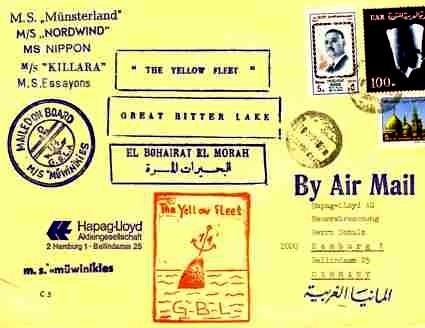
In time, it was possible to reduce the number of crew members on board the ships, and in 1969 the ships were gathered into several groups to further reduce the number of crew necessary for their upkeep. Those crew that were left to maintain the vessels were rotated every three months. In 1972, the last crew members of the German ships were finally sent home, with the maintenance of the ships left to a Norwegian company.
A postal system evolved, the hand-crafted stamp of which became collectors' items around the world. The Egyptian postal authority recognized the stamps, allowing their use worldwide. In terms of the postal system, this resulted in the creation of group stamps such as:
In early 1975, the Suez Canal was once again opened for international transport, and on 24 May 1975, the German ships Münsterland and Nordwind finally reached Hamburg port, cheered by more than 30,000 spectators. They were reportedly the only ships to have left the canal under their own power. For the Münsterland this was the end of a voyage to Australia which had lasted eight years, three months and five days.
